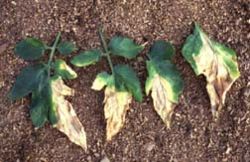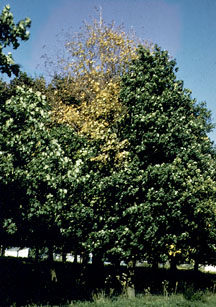Verticillium
A Microbial Biorealm page on the phylum Verticillium

Classification
Higher order taxa
Division Eucaryota, Kingdom Fungi, Phylum Ascomycota, Class Incertae sedis
Species
Verticillium dahliae
Verticillium lecanii
Verticillium albo-atrum
Description and Significance


Verticillium is a widely distributed filamentous fungus that inhabits decaying vegetation and soil. Some Verticillium species may be pathogenic to arthropods, plants, and other fungi. It is commonly considered as a contaminant. Verticillium may very rarely cause human disease.(1)
Verticillium is a genus of fungi of Ascomycota. This genus has three ecologically based group: mycopathogens, entomopathogens, and plant pathogens and related saprophytes. The commonly known species of Verticillium fall within the plant pathogens group.
Verticillim dehliae and Verticillim albo-atrum cause wilt diseases, which refers to loss of rigidity of non-woody parts of plants, in plants such as cotton, potatos, peppers, eggplants, and tomatoes. Because these fungi are soil-borne and can infect so many different plant species, Verticillium wilt is difficult to control. (4)

Genome Structure
Cell Structure and Metabolism
Ecology
Pathogenicity and Clinical Significance
Verticillium has been reported as a possible cause of keratitis in humans. (2)(3)
References
(1)http://www.doctorfungus.org/thefungi/verticillium.htm
(2)Larone, D. H. 1995. Medically Important Fungi - A Guide to Identification, 3rd ed. ASM Press, Washington, D.C.
(3)Sutton, D. A., A. W. Fothergill, and M. G. Rinaldi (ed.). 1998. Guide to Clinically Significant Fungi, 1st ed. Williams & Wilkins, Baltimore.
(4)http://www.ext.vt.edu/pubs/plantdiseasefs/450-619/450-619.html
